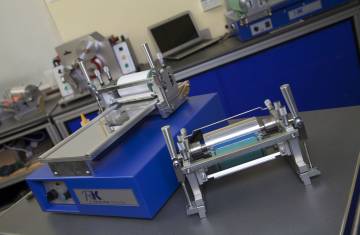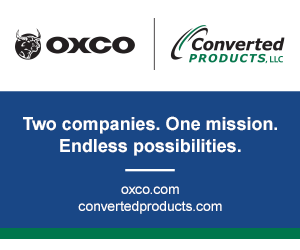Small Pack Color Communication
- Published: February 20, 2023
By Tom Kerchiss, Chairman, RK Print Coat Instruments Ltd
In decades past, marketers, brand owners and shoppers extolled the virtues of buying items such as family sized portions of chicken pieces and jumbo-sized flexible packs of steak in bulk. It seemed to make sense and everyone benefited. Much better to buy a mega-pack of chicken packed in a single no-frills plastic bag in one go, than making multiple trips to keep the family fed. Apart from saving on petrol the shopper had more free time for doing something more interesting. Buying big was also usually cheaper.
Of course, manufacturers, processors and retailers benefited as well. Better to sell meat, vegetables and foods that are perishable in a single king-sized flexible freezer stored pack than sell the same items in multiple bags. Products sold from freezers at low cost in big bags required less in the way of material to produce and needed little in the way of decorative embellishment. On pack design was limited; color defined brand.
In the world of today – big – is not always better. More and more food items are packed or wrapped in small sachets, pouches and single sized thermo-formed trays with a carton overwrap. Of course, many foods and other goods are marketed in larger sizes. Retailers such as discount warehouses and shopping clubs thrive on marketing bundled or palletized goods. However, for many people buying in bulk would be inconvenient, a waste of money and a waste of food. Demographic changes have meant that more and more consumers live alone or as couples. An aging population; the decision by many young couples to remain childless make the purchasing of large items wasteful.

It's not just food items such as film/foil wrapped chocolate bars or sachets of tomato sauce that are sold mini-sized. Disposable razors, mini-travel packs, pain relief tablets, skin care sampler pots, anti-bacterial wipes and countless other products are sold in convenient packs that can be slipped into bags or even pockets.
The saying: ‘We feast with our eyes’ has from the marketers perspective some grounding in fact. Color defines the brand and in retail outlets such as supermarkets, color recognition can serve as a navigation aid for a particular product and brand. Color is the first thing a consumer notices, therefore it is critical that color is chosen wisely and applied correctly run after run after run.
Color has to work hard, doubly so with many of the small packaged items displayed in many different types of retail outlets and in a variety of retail display settings. Good designs for processes such as flexo are the ones that enable the printer to maintain color saturation throughout the tonal range and to print at speed. The design must be optimized for the process otherwise there is a real risk of inconsistencies such as color variation, registration difficulties and much more besides.
Inconsistency of color, poor rub resistance and chemical resistance will mar presentation and quite likely capture the consumers attention but not for the right reasons. Poor quality of print and color is perhaps more noticeable when printing chocolate bar and snack wrappers because they are more likely to be handled and scrutinized by the consumer prior to purchase and consuming. color as with a big pack, defines the brand.
The introduction in recent years of more advanced color communication devices has enabled users to monitor, highlight and obtain greater control over process variables that affect accurate color representation, printability and issues that impact on commercial and process viability.
The K Printing Proofer is a multi-print process color communication or sample preparation system. Capable of accommodating flexible substrates including paperboard, films and foils the K Printing Proofer can produce quality proofs using gravure, gravure-offset or flexographic inks.
Two or more inks can be printed simultaneously for comparison purposes and registration is included for overprinting. Another feature of the K Printing Proofer is that wet or dry laminating samples can be obtained using the gravure printing head with RK Print Coat Instruments K-Laminating accessories, which includes a rubber covered bed and wired K-Lam bars fitted in place of the doctor blade assembly to control adhesive coat weight.
Learn more at www.rkprint.com.












